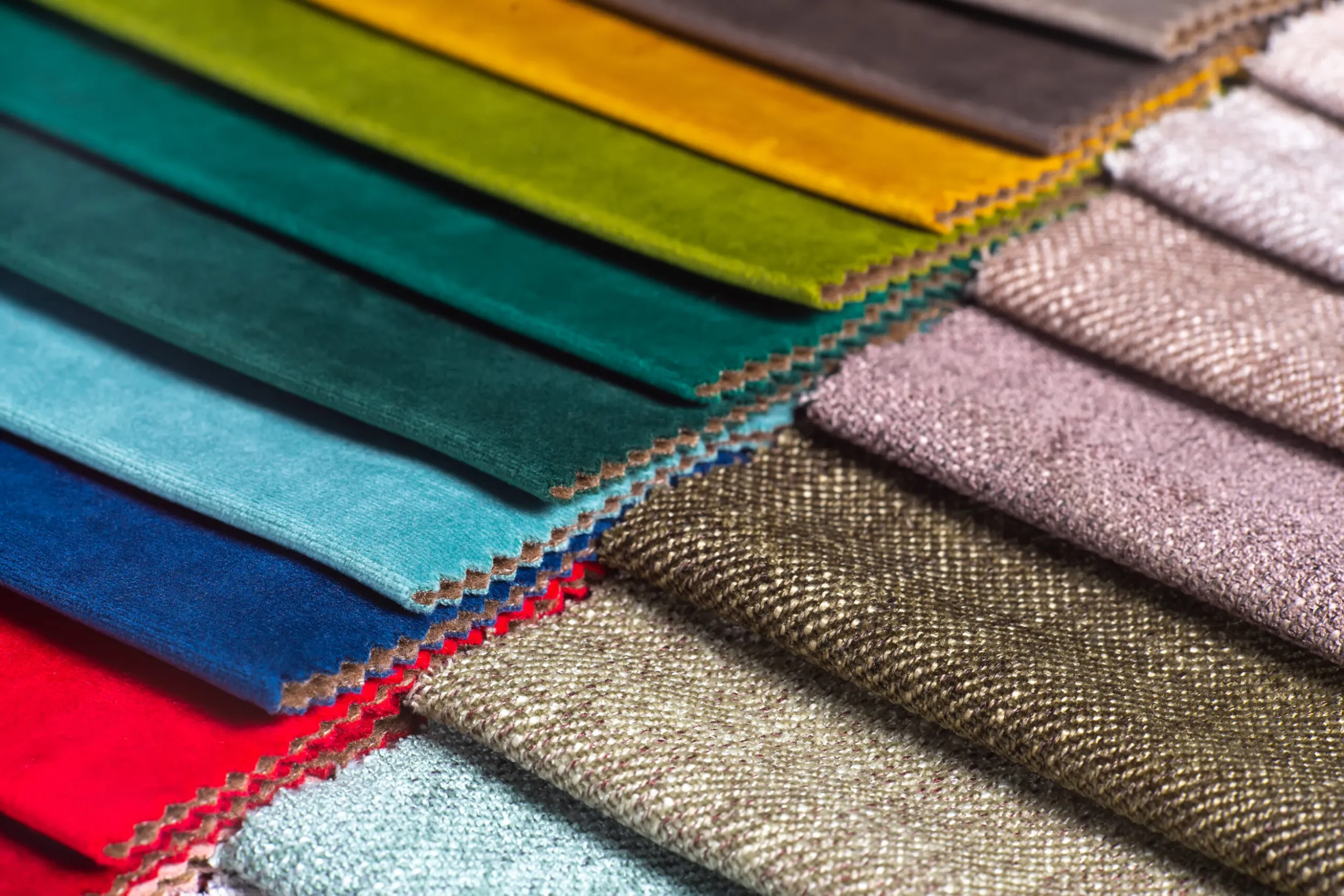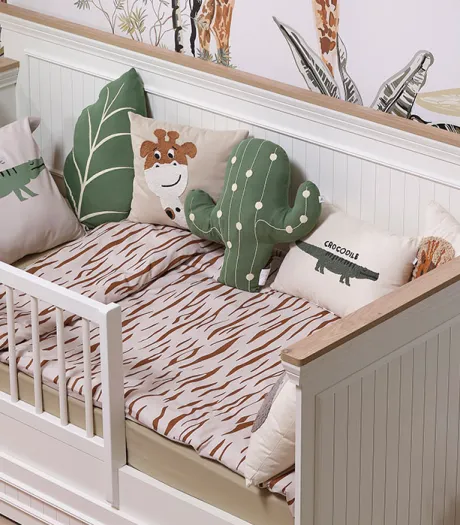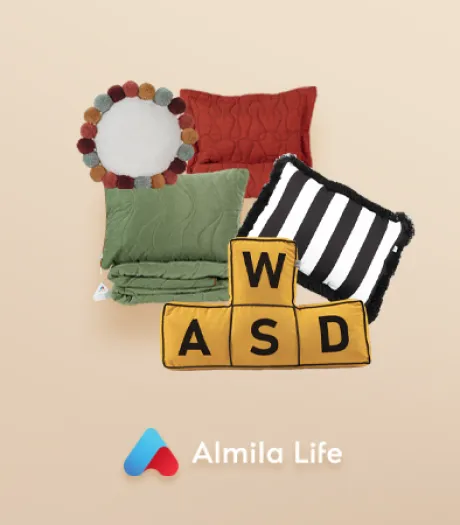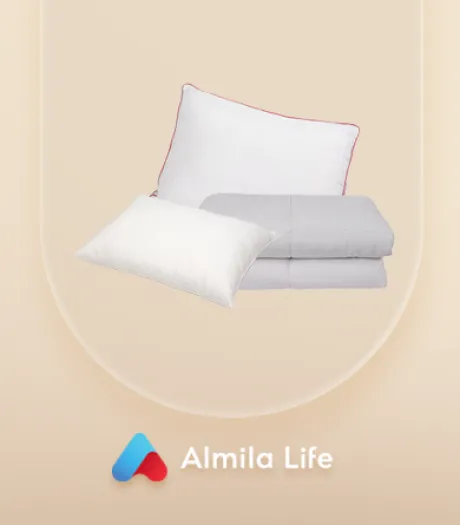
Chenille fabric, one of the most notable fabric types in the world of furniture upholstery, curtains and textiles, stands out with its soft texture and aesthetic appearance. Chenille fabric, which can easily adapt to both classic and modern styles in home decoration, has been increasing its popularity in recent years.
Chenille is a word of French origin and means "caterpillar". This name is given because the fabric has threads that create a soft, velvety feel on its surface. Chenille fabric is produced from chenille yarn and has a characteristic hairiness on its surface. Thanks to this hairy structure, it offers a warm and comfortable feeling both visually and tactilely.
Different raw materials such as cotton, polyester, acrylic or viscose can be used in the production process. In this way, the usage properties of the fabric can be shaped according to the need. In addition, since it is produced with the chenille weaving technique, its durability is also quite high.

What are the Features of Chenille Fabric?
Chenille fabric, which is frequently preferred in the furniture and textile sector, attracts attention with its durability and soft texture. Chenille fabric, which easily adapts to different decoration styles with its aesthetic appearance, has many features.
- It has a soft and velvety texture. It gives a comfortable feeling when touched, and is preferred in seating groups and pillows for this reason.
- It is highly durable. It is resistant to wear and tear, which provides long-term use.
- It has an aesthetic shine. It gives a decorative appearance thanks to its slightly shiny surface that changes according to the light.
- It offers rich color options. Since it can be produced in different tones and patterns, there are alternatives suitable for every style.
- It can be easily shaped. It provides smooth upholstery in furniture thanks to its flexible structure.
- It has insulation properties. It contributes to sound and heat insulation thanks to its thick texture.
- It is relatively easy to clean. It has high stain resistance, and can maintain its first-day appearance with regular maintenance.
- It can be pilled. Light fluffing may occur on the surface of the fabric during long-term use, but this is usually related to the quality of the fabric.
- Careful use may be required for allergic individuals. Its fluffed structure may cause discomfort in some sensitive individuals.
- It is advantageous in terms of price-performance. It is offered in affordable price ranges compared to its features.
Does Chenille Fabric Make You Sweat?
One of the most curious issues in fabric selection is the breathability of the fabric and whether it makes you sweat. The answer to the question of whether chenille fabric makes you sweat varies depending on the yarn the fabric is made from. Cotton-based chenille fabrics are generally breathable and have a low sweating rate. However, polyester-based chenille fabrics may be weaker in terms of air permeability and may cause sweating in hot weather. Therefore, it is of great importance to choose the right type of yarn according to the purpose of use.

Does Chenille Fabric Stain?
If there are small children or pets at home, the most important issue to consider in upholstery fabrics is stain resistance. Chenille fabric tends to stain moderately. The densely textured and hairy surface of the fabric may cause some liquids to remain on the surface. However, this does not mean that the stain will completely penetrate the fabric. This problem can be largely prevented if chenille fabrics that have undergone stain repellent processes, especially during the production phase, are preferred. In addition, the life of chenille fabrics can be extended with regular cleaning and the use of protective spray.
What are the Areas of Use of Chenille Fabric?
Chenille fabric has a wide range of uses. The most common area of use is seating groups. Chenille fabric sofa sets are an ideal choice for users looking for both elegance and comfort. While providing a comfortable seating experience thanks to its soft texture, it is suitable for long-term use thanks to its durability. It is also frequently preferred in curtains, pillowcases, cushions, bedspreads and upholstery fabrics.
Chenille pique fabrics used in bedroom textiles stand out with both their aesthetic and useful structure. This type of fabric provides a luxurious look when combined with stylish patterns.

What are the Types of Chenille Fabrics?
Chenille fabric appeals to different areas of use with its soft texture and aesthetic appearance. Chenille fabrics, which vary according to weaving technique and yarn structure, are preferred for both decorative and functional purposes. These fabrics, which vary according to the place of use, yarn type and blend ratios, find a wide area from furniture upholstery to curtain systems.
- Cotton Blended Chenille Fabric: This type of fabric, woven with natural cotton yarns, is preferred especially in hot climates with its breathable structure. It offers comfort with its softness and skin-friendly structure.
- Polyester Chenille Fabric: This type, produced with synthetic fiber, stands out with its high durability. Thanks to its stain-resistant feature, it provides long-lasting use in seating groups and sofa upholstery.
- Acrylic Chenille Fabric: This type of fabric, woven with acrylic yarns, feels like wool but is lighter. It is generally preferred in outdoor textiles and winter home products.
- Mixed Chenille Fabric (Cotton + Polyester): Produced by combining both natural and synthetic fibers, this fabric offers durability and comfort together. In addition to its aesthetic appearance, it also provides the advantage of long-term use.
- Bamboo Chenille Fabric: Chenille fabric obtained from bamboo fiber draws attention with its environmentally friendly and antibacterial properties. It is used especially in luxury home textile products with its softness and natural shine.
- Thin Chenille Fabric: This type of fabric, which is more tightly woven and consists of thin threads, offers an elegant appearance in curtains and decorative pillows. It takes shape easily thanks to its lightweight structure.
- Thick Chenille Fabric: This fabric, which has a denser weaving structure, is used in seating areas such as armchairs and sofas. It is ideal for the winter season as it provides thermal insulation.

How to Clean Chenille Fabric?
Due to its soft and hairy structure, cleaning chenille fabrics requires special attention. Regular vacuuming is recommended for cleaning chenille fabrics. Gentle cleaning can be done weekly with a vacuum cleaner to prevent dust from entering the hairs. In case of staining, it is best to intervene immediately. Wiping with a damp cloth is usually sufficient. However, caution should be exercised in using detergents; products containing bleach should be avoided and, if possible, special fabric shampoos should be preferred.
If the seat covers are removable, they can be washed according to the label instructions. However, most chenille fabrics are more suitable for hand or dry cleaning. High-speed machine washing can damage the hair structure.
Chenille fabric is an ideal option for users looking for aesthetic appearance, comfortable use and durability together. If you want to renew your home, have your seats covered or choose decorative textile products, you should definitely consider chenille fabric. This type of fabric, which maintains its first-day appearance for many years with proper care, will make a difference in both classic and modern spaces.
What Are the Most Useful Sofa Fabrics? You may be interested in the blog post titled!






































